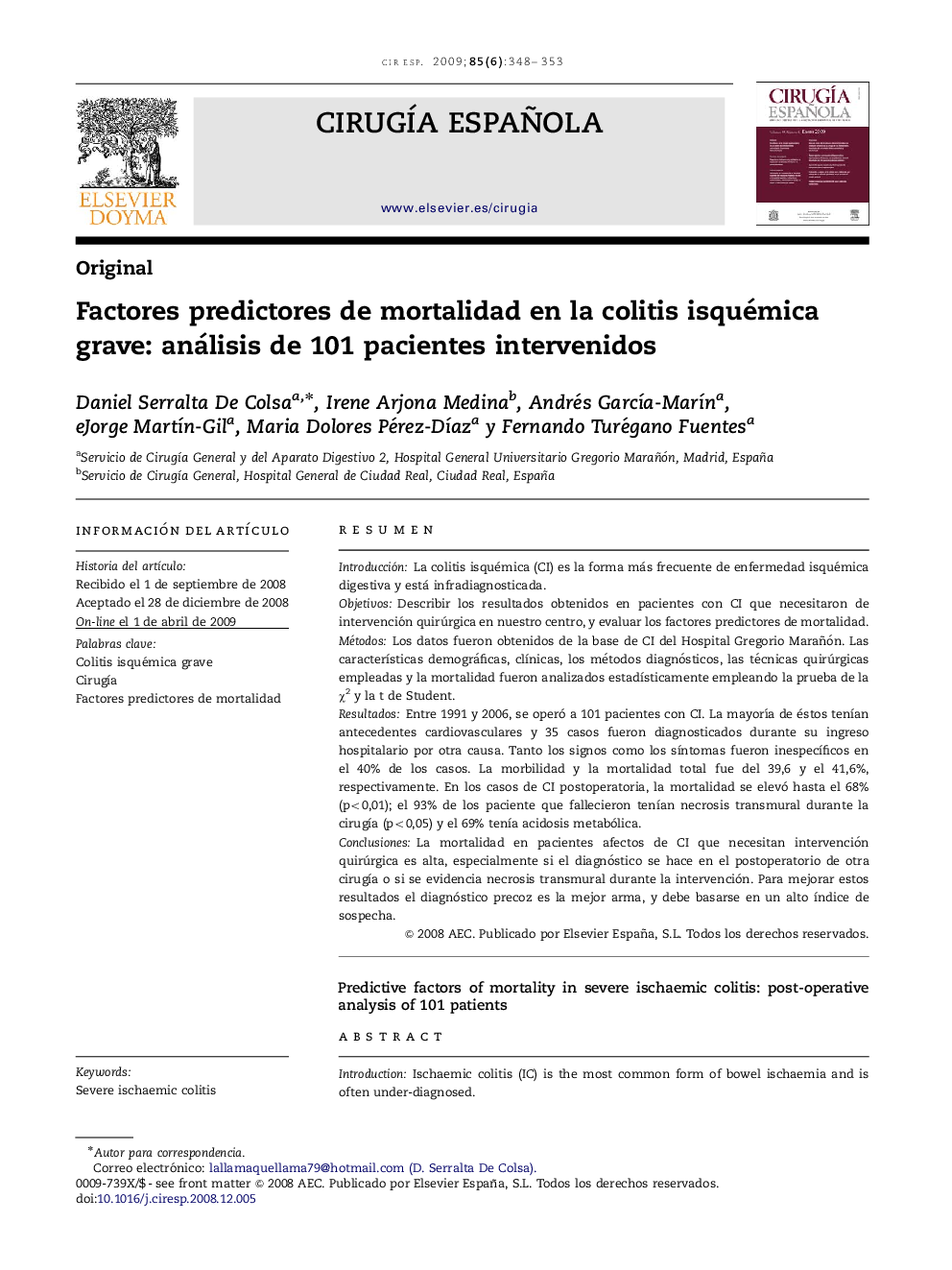| Article ID | Journal | Published Year | Pages | File Type |
|---|---|---|---|---|
| 4253759 | Cirugía Española | 2009 | 6 Pages |
ResumenIntroducciónLa colitis isquémica (CI) es la forma más frecuente de enfermedad isquémica digestiva y está infradiagnosticada.ObjetivosDescribir los resultados obtenidos en pacientes con CI que necesitaron de intervención quirúrgica en nuestro centro, y evaluar los factores predictores de mortalidad.MétodosLos datos fueron obtenidos de la base de CI del Hospital Gregorio Marañón. Las características demográficas, clínicas, los métodos diagnósticos, las técnicas quirúrgicas empleadas y la mortalidad fueron analizados estadísticamente empleando la prueba de la χ2 y la t de Student.ResultadosEntre 1991 y 2006, se operó a 101 pacientes con CI. La mayoría de éstos tenían antecedentes cardiovasculares y 35 casos fueron diagnosticados durante su ingreso hospitalario por otra causa. Tanto los signos como los síntomas fueron inespecíficos en el 40% de los casos. La morbilidad y la mortalidad total fue del 39,6 y el 41,6%, respectivamente. En los casos de CI postoperatoria, la mortalidad se elevó hasta el 68% (p<0,01); el 93% de los paciente que fallecieron tenían necrosis transmural durante la cirugía (p<0,05) y el 69% tenía acidosis metabólica.ConclusionesLa mortalidad en pacientes afectos de CI que necesitan intervención quirúrgica es alta, especialmente si el diagnóstico se hace en el postoperatorio de otra cirugía o si se evidencia necrosis transmural durante la intervención. Para mejorar estos resultados el diagnóstico precoz es la mejor arma, y debe basarse en un alto índice de sospecha.
IntroductionIschaemic colitis (IC) is the most common form of bowel ischaemia and is often under-diagnosed.ObjectivesTo report the results obtained in patients with IC who required surgical intervention in our Hospital, and to evaluate the predictive factors of mortality.MethodsThe data were obtained from the Gregorio Marañon Hospital CI database. The demographic and clinical characteristics, diagnostic methods, surgical techniques employed and mortality were analysed statistically, using the χ2 and Student t test.ResultsOne-hundred and one patients with CI were operated on between 1991 and 2006. The majority of them had cardiovascular histories and 35 cases were diagnosed during their hospital stay due to another cause. The signs and the symptoms were non-specific in 40% of the cases. Total morbidity and mortality was 39.6% and 41.6% respectively. In the post-operative IC cases, the death rate increased to 68% (p<0.01); 93% of the patients who died had transmural necrosis during the surgery (p<0.05) and 69% had a metabolic acidosis.ConclusionsThe death rate in patients with IC that requires surgery is high, particularly if the diagnosis is made in the post-operative period after surgery for another cause, or if there is evidence of transmural necrosis during the intervention. Early diagnosis is the best tool to improve these results.
